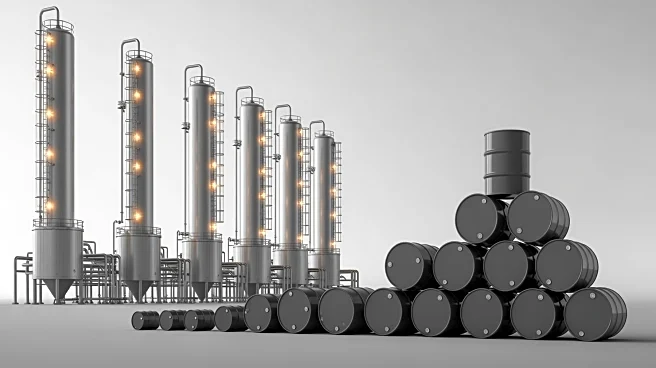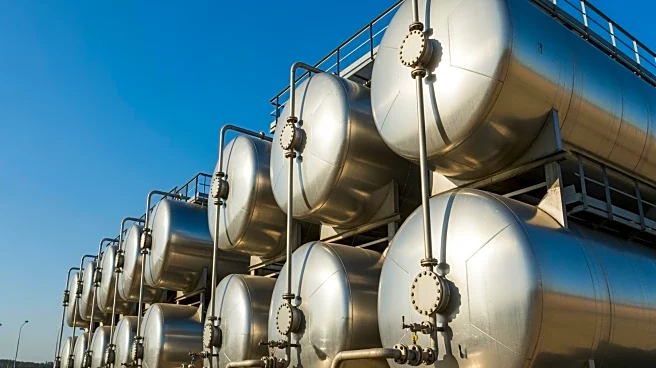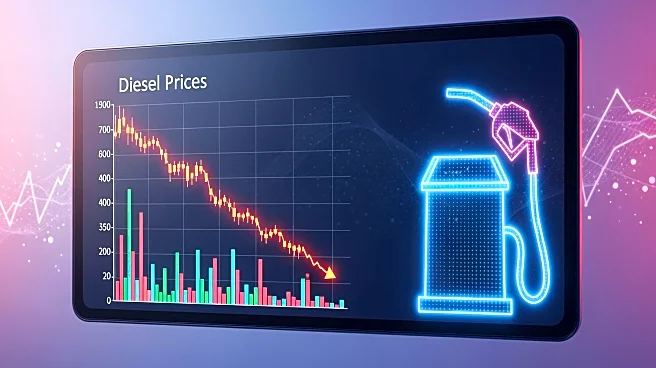What's Happening?
The Energy Information Administration (EIA) has reported a rise in ethanol production to its highest level in five weeks, reaching an average of 1.074 million barrels per day for the week ending October 10. This increase comes despite a decline in ethanol inventories,
which fell to 22.628 million barrels, marking the lowest inventory level in a month. Regional production changes were noted, with increases in the Gulf Coast and East Coast, while the Midwest saw a slight decrease. The report also highlighted weather conditions affecting agricultural yields, with drought impacting corn and soybean production in key states.
Why It's Important?
The increase in ethanol production is significant as it reflects ongoing demand for biofuels, which are crucial for reducing reliance on fossil fuels and supporting renewable energy initiatives. The decline in inventories suggests a strong market demand, potentially influencing ethanol prices and impacting agricultural sectors reliant on corn for ethanol production. Additionally, the drought conditions affecting crop yields could have broader implications for food supply and pricing, influencing economic stability in agricultural regions.
What's Next?
Continued monitoring of ethanol production and inventory levels will be essential to understand market dynamics and potential price fluctuations. The impact of weather conditions on crop yields will also be closely watched, as it could affect future production levels and economic outcomes for farmers. Stakeholders in the biofuel industry may need to adjust strategies to accommodate changing supply and demand conditions.
Beyond the Headlines
The interplay between ethanol production and agricultural yields highlights the complex relationship between energy and food sectors. As climate conditions continue to affect crop production, there may be increased pressure on biofuel producers to innovate and adapt to ensure sustainable energy and food supplies.













